Tulips are beautiful and vibrant flowers that bring joy to any garden or floral arrangement. However, like any plant, tulips can face issues that can affect their growth. In this article, we will explore natural and organic treatments to revive dying tulips and address common problems such as leaf and bulb-related issues. By following these steps, you can ensure that your tulips thrive and continue to bring beauty to your garden.
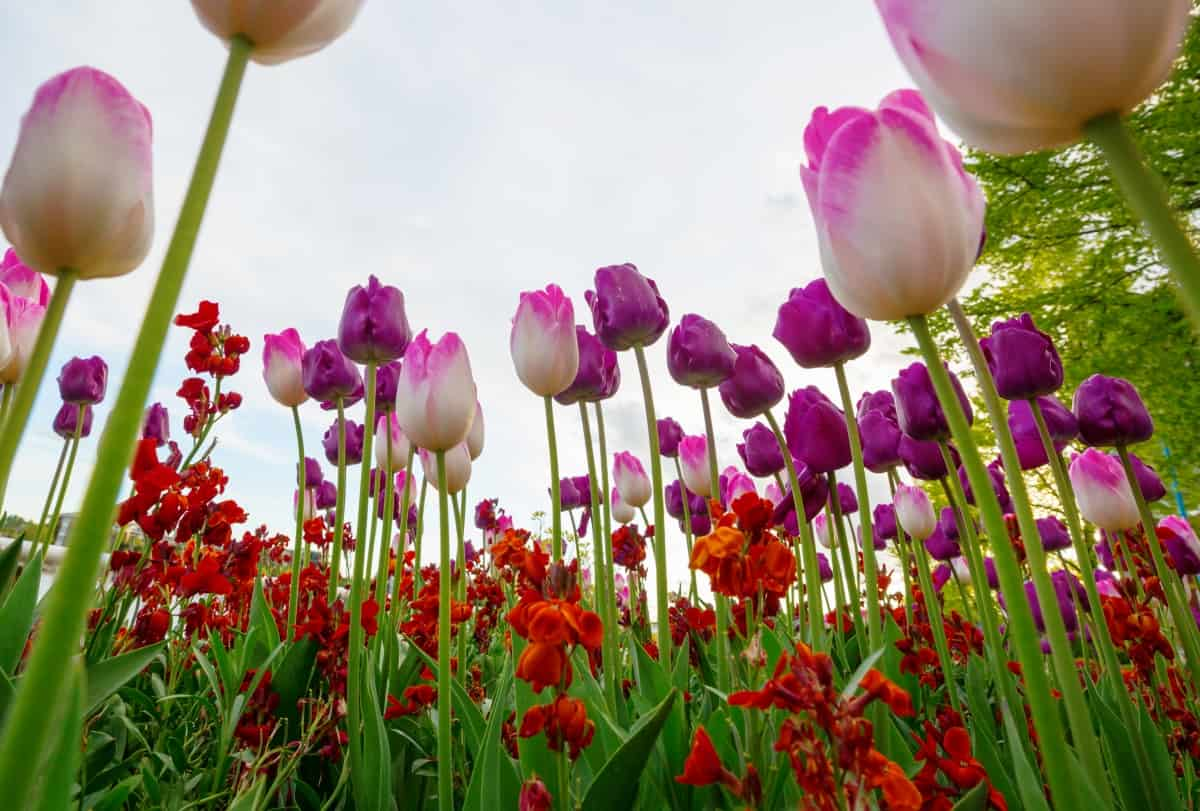
About Tulip Characteristics
Before we delve into the remedies for tulip problems, let’s first understand some key characteristics of tulips. Tulips belong to the genus Tulipa and are part of the Liliaceae family. They are native to Central Asia and are known for their vibrant colors and distinct cup-shaped flowers. Tulips come in a different range of varieties, each with its unique characteristics, including different colors, shapes, and sizes. Understanding the specific needs, growth patterns of tulips will help you better care for them and address any issues they may face.
Preventing Non-Blooming Tulips
One common problem tulips may encounter is non-blooming. If your tulips are not producing flowers, there are a few factors to consider. First, ensure that they are receiving adequate sunlight. Tulips require six hours of direct sunlight each day to bloom properly. If they are planted in a shady area, consider transplanting them to a sunnier spot.
Another factor to consider is the age of the tulip bulbs. Tulips need a period of dormancy to bloom successfully. If your tulip bulbs are old or have yet to be properly stored, they may not bloom. It is recommended to plant fresh tulip bulbs each year for optimal blooming.
Natural Remedies for Tulip Flower Drop
Tulip flower drop, where the flowers fall off prematurely, can be frustrating for gardeners. To prevent this issue, it is important to provide proper care and attention to your tulips. One effective remedy is to deadhead the tulips as soon as they go by, but do not remove the leaves. The leaves are essential for gathering energy for next year’s blooms.
Additionally, providing adequate water and nutrients is crucial for preventing flower drop. Water your tulips regularly, ensuring that the soil is moist but not soggy. Applying a balanced organic fertilizer, such as bone meal or bulb food, during the spring when the leaves emerge can also help promote healthy flower development.
Reviving Wilting Tulip Leaves
Wilting tulip leaves can be a sign of stress or inadequate care. To revive wilting tulip leaves, it is important to address the underlying issues. One common cause of wilting is overwatering or poor drainage. Ensure that your tulips are planted in well-draining soil and avoid overwatering. Allow the soil to dry before waterings to prevent root rot and wilting.
In case you missed it: Tulip Cultivation Information Guide
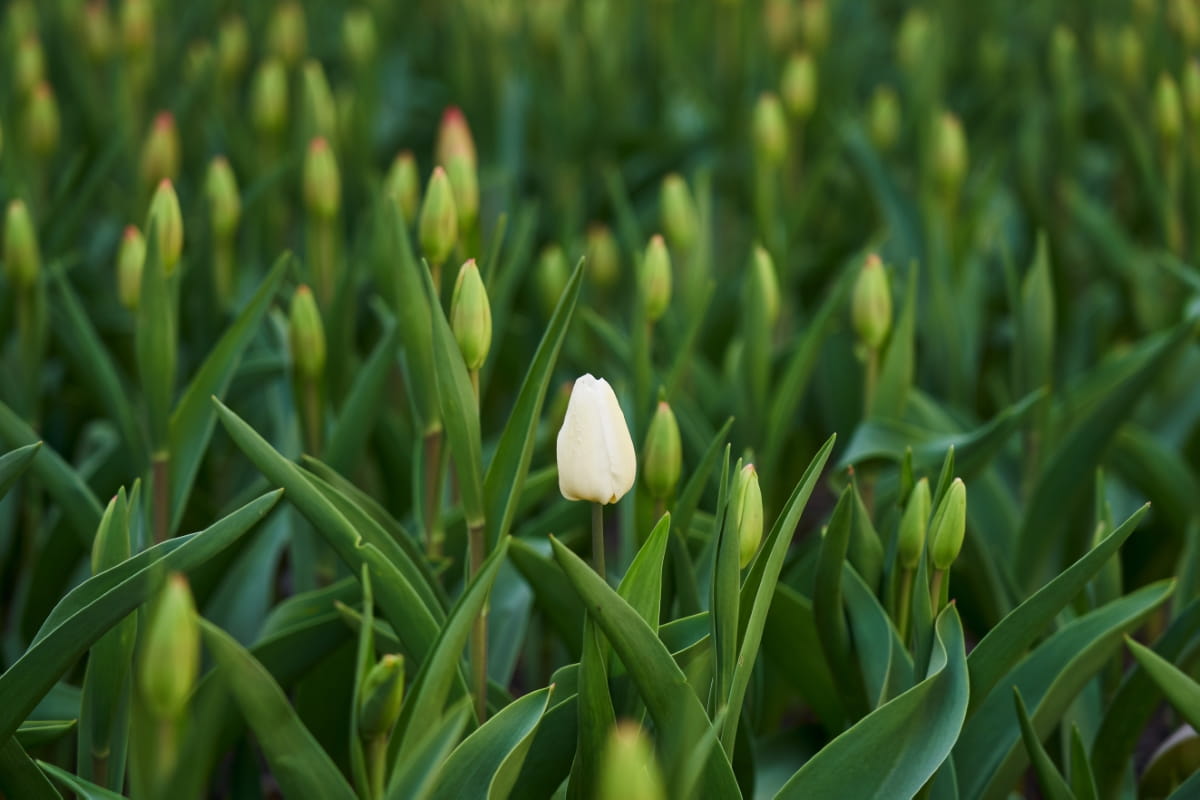
Another factor to consider is nutrient deficiency. Tulips require certain nutrients, such as nitrogen, phosphorus, and potassium, for healthy leaf growth. Applying organic amendments, such as compost or well-rotted manure, can provide a nutrient boost and help revive wilting leaves.
Combatting Yellowing Leaves on Tulips
Tulips with yellowing leaves may be suffering from a disease or nutritional deficit. It’s critical to take care of these problems right away to prevent fading foliage. First, make sure your tulips are getting enough nourishment. Compost and organic fertilizers are examples of organic amendments that can be applied to help refill the soil with necessary nutrients and stop yellowing leaves.
If the leaves continue to yellow, it could be a sign of a disease like tulip fire (Botrytis tulipae). This fungus illness causes the leaves to wilt, yellow, and develop spots. It is crucial to maintain excellent garden hygiene to prevent tulip fire and other fungal infections. To stop the spread of fungal spores, remove and destroy any affected leaves or plants, and refrain from watering from above.
Managing Spotted Leaves Naturally
Tulip leaves with spots may have fungal or bacterial diseases. To manage spotted leaves naturally, avoid and care for your tulips. Do not water leaves overhead, as they can harbor fungal and bacterial infections. Keep the foliage dry by watering at the base. Immediately remove and destroy leaves with spots to prevent infection. Organic fungicides like neem oil or copper-based sprays can suppress fungal and bacterial diseases.
Eco-Friendly Solutions for Curling Tulip Leaves
Tulip leaves can curl for a variety of reasons, such as pests, illnesses, or stress from the climate. Finding the root cause of curling leaves is essential to taking eco-friendly action. If the curling is brought on by environmental stressors like drought or extremely high temperatures, the problem can be resolved with the right care and upkeep of ideal growing circumstances.
If the curling is caused by pests like beetles or aphids, natural pest control techniques should be used. Aphid populations can be managed, for instance, by introducing beneficial insects like ladybugs or lacewings. Additionally, you can discourage pests without harming the environment or beneficial insects by utilizing neem oil sprays or organic insecticidal soaps.
Stopping Tulip Bud Drop Before It Starts
Tulip bud drop, when the buds fall off before blooming, can be disappointing. Proper care and addressing potential issues can prevent bud drop. One common cause of bud drop is inadequate watering. Ensure that your tulips receive regular watering, keeping the soil consistently moist but not waterlogged. Another factor to consider is nutrient deficiency. Tulips require adequate nutrients to develop and maintain healthy buds. Applying organic fertilizers or compost teas can provide the necessary nutrients and help prevent bud drop.
Natural Control of Aphids on Tulips
Common pests that can infest tulips and harm the leaves and blossoms are aphids. Employing environmentally friendly practices is crucial for naturally controlling aphids. Introducing beneficial insects, such as ladybugs or lacewings, which consume aphids and aid in population management, is one efficient way.
In case you missed it: Hydroponic Tulips Farming, Growing Tulips Hydroponically

Applying a water and mild dish soap solution to the tulips that are afflicted is an additional natural cure. Aphids can be suffocated and discouraged by this approach without endangering plants or helpful insects. Furthermore, you may stop additional harm by routinely checking your tulips for aphid infestations and personally removing them.
Preventing Tulip Bulb Rot in Wet Soils
Bulbs may perish due to tulip bulb rot, which can occur in moist or poorly drained soils. To avoid bulb rot, make sure the soil drains properly. Plant your tulips on soil that drains well, or add organic matter to thick clay soils to help with drainage. Don’t water your tulips too much, especially if there has been a lot of rain recently.
When watering, let the soil dry out a little bit to avoid soggy circumstances that might lead to bulb rot. Furthermore, planting tulip bulbs at the proper depth—typically two to three times their height—can aid in preventing an overabundance of moisture from collecting around the bulbs.
Dealing with Tulip Mosaic Virus Organically
Tulip mosaic virus is a viral disease that can affect tulips, causing mottled or streaked patterns on the leaves and flowers. Unfortunately, there is no cure for the tulip mosaic virus, and infected plants should be removed and destroyed to prevent the virus from spreading to healthy plants.
To prevent the tulip mosaic virus, practice good garden hygiene. Remove and destroy any infected plants immediately. Additionally, avoid planting tulips near other susceptible plants, as the virus can spread through aphids or contaminated tools. Regularly inspecting your tulips for signs of the virus and promptly removing infected plants can help prevent its spread.
Natural Treatments for Tulip Fire (Botrytis Tulipae)
Tulip fire, caused by the fungus Botrytis tulipae, can cause significant damage to tulips, including wilting, browning, and decay of the flowers and leaves. To treat tulip fire naturally, it is important to preventive measures and provide proper care for your tulips. Practicing good garden hygiene is crucial in preventing the spread of tulip fire. Remove and destroy any infected plant material immediately. Avoid overhead watering, as wet conditions can promote the growth of the fungus. Applying organic fungicides, such as neem oil or copper-based sprays, can also help control tulip fire.
Eco-Friendly Pest Control for Snails and Slugs
Pests like snails and slugs harm tulip foliage and blossoms. There are many eco-friendly snail and slug management options. Protecting your tulips from physical obstacles works well. Wrap the plant bases in copper tape or diatomaceous earth. Snails and slugs avoid these compounds. Natural remedy: bring birds or frogs to your garden as predators. They suppress snail and slug populations by eating them. Eliminating garbage and dense vegetation can also deter snails and slugs from your garden.
Preventing Non-Blooming Tulips
In case you missed it: Natural Solutions for Peony Leaf and Flower Problems: 100% Effective Remedies
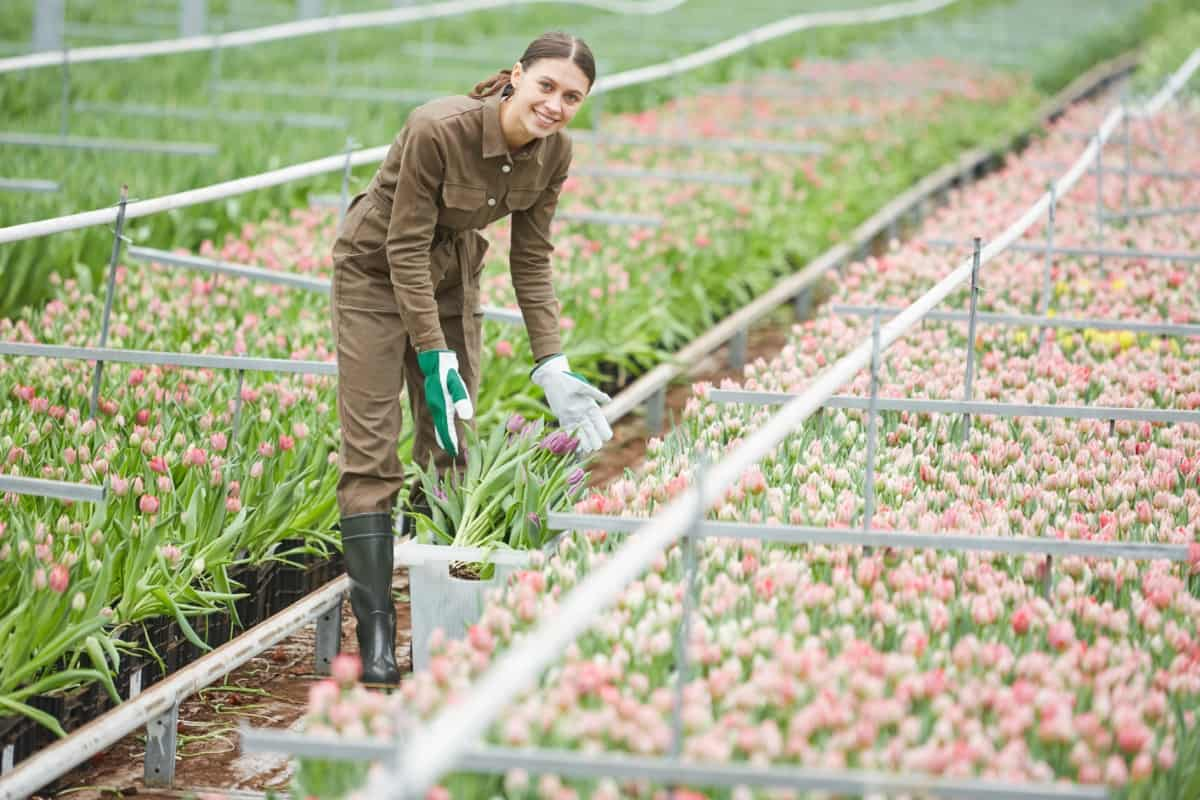
Tulips are known for their vibrant and colorful blooms. Sometimes they fail to produce flowers, which can be unpleasant, but there are natural solutions to encourage blooming. One common reason for non-blooming tulips is improper bulb planting depth. Ensuring that bulbs are planted at the correct depth, usually about 6-8 inches deep, can promote healthy growth and flowering. Additionally, providing adequate sunlight, proper watering, and well-drained soil can also contribute to successful blooming.
Natural Remedies for Tulip Flower Drop
Tulip flower drop, where the flowers prematurely wilt and fall off, can be disheartening. To address this issue naturally, it’s important to understand the underlying causes. One common cause is a lack of nutrients. Adding organic amendments such as compost or well-decomposed manure can provide nutrients for healthy flower development. Additionally, ensuring proper watering and avoiding over-fertilization can also help prevent flower drop.
Combatting Yellowing Leaves on Tulips
Yellowing leaves on tulips can be a sign of nutrient deficiencies or diseases. To combat this issue naturally, it’s important to provide a balanced and nutrient-rich soil. Organics like bone meal or fish emulsion can provide nutrients to promote healthy leaf growth. Additionally, maintaining proper moisture levels and avoiding over-watering can help prevent diseases that may cause yellowing.
Managing Spotted Leaves Naturally
Bacterial or fungal infestations can cause spotted leaves on tulips. Properly spacing the plants will help to create proper air circulation around them, which will help to naturally handle this problem. Another way to stop the spread of fungal infections is to water plants at the base rather than overhead. To control the infections, organic fungicides like neem oil or copper-based sprays can be applied as needed.
Eco-Friendly Solutions for Curling Tulip Leaves
Curling leaves on tulips can be a result of environmental stress or pest infestations. To address this issue naturally, it’s important to provide adequate water and avoid over-fertilization, as excessive nutrients can lead to leaf curling. Additionally, inspecting the plants for pests such as aphids or mites and employing eco-friendly pest control methods, like introducing beneficial insects or using insecticidal soaps, can help prevent further damage.
In case you missed it: Natural Solutions for Hydrangea Problems: 100% Effective Remedies for Leaf and Flowers
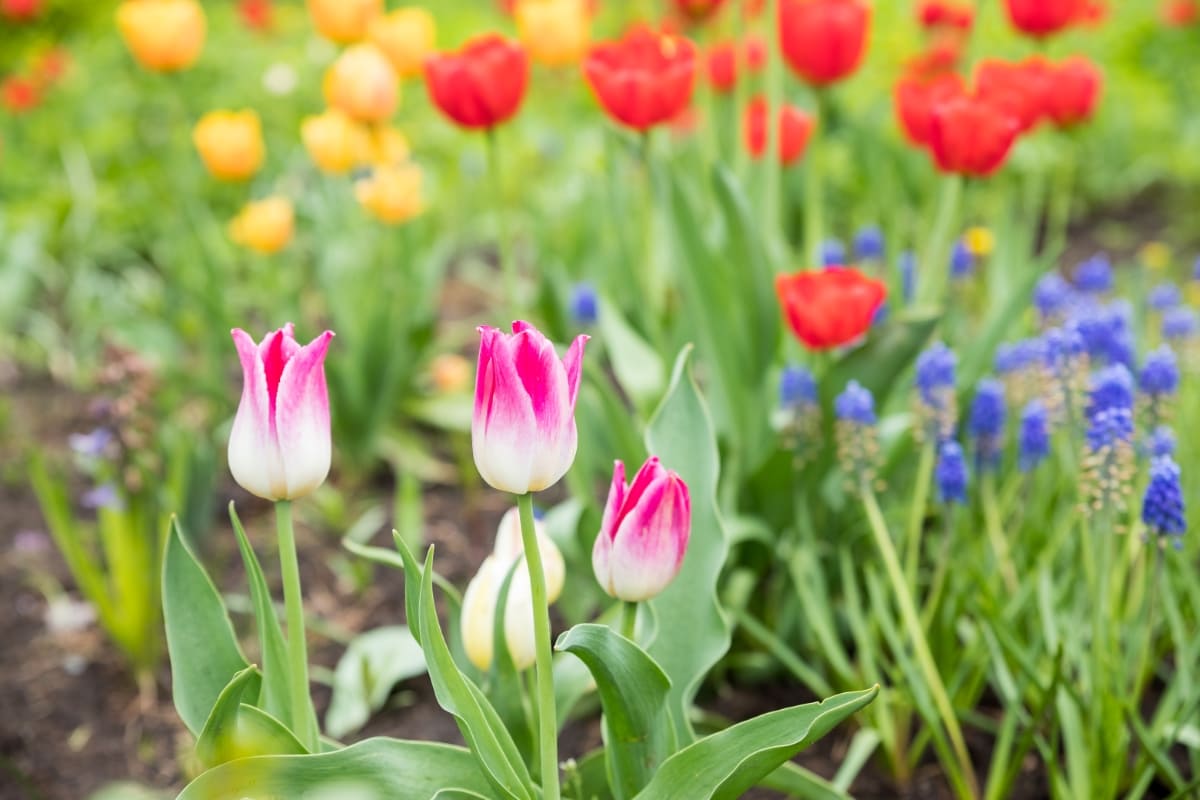
Stopping Tulip Bud Drop Before It Starts
Tulip bud drop occurs when the buds fail to open and instead wither and drop off the plant. To prevent this issue, it’s important to provide optimal growing conditions. This includes ensuring proper soil drainage, avoiding over-watering, and providing adequate sunlight. Additionally, avoiding excessive nitrogen fertilization can help promote healthy bud development.
Natural Control of Aphids on Tulips
Aphids are common pests that can infest tulips and damage the leaves and flowers. To naturally control aphids, it’s important to attract beneficial insects, ladybugs or lacewings, which feed on them. Creating a diverse and insect-friendly garden environment encourages the presence of these beneficial insects. Additionally, using a strong blast of water or applying insecticidal soap can help physically remove or deter aphids from the plants.
Preventing Tulip Bulb Rot in Wet Soils
Tulip bulb rot can occur in wet and poorly drained soils, leading to decay and eventual bulb death. To prevent bulb rot, it’s crucial to ensure proper soil drainage. To improve soil structure and drainage, supplement the soil with organic matter, compost or well-rotted manure. Bulb rot can also be avoided by not overwatering bulbs and by leaving enough space between them.
Dealing with Tulip Mosaic Virus Organically
Tulip mosaic virus is a common viral disease that affects tulips and can result in distorted or discolored foliage and flowers. Once a plant is infected, there is no cure. The best approach is prevention, which includes planting virus-free bulbs and avoiding contact with infected plants or tools. Removing and destroying infected plants can also help prevent the spread of the virus.
In case you missed it: How to Make Flowers Bloom Faster: Naturally, Overnight, at Home, and in Water with Fertilizers

Natural Treatments for Tulip Fire (Botrytis Tulipae)
Tulip fire, caused by the fungus Botrytis tulipae, can lead to brown spots and decay on the leaves and flowers. To treat this fungal disease naturally, it’s important to improve air circulation around the plants by spacing them adequately. Removing and disposing of infected plant debris can also help prevent the spread of the fungus. Additionally, applying organic fungicides such as sulfur or copper-based sprays can help control the disease.
Eco-Friendly Pest Control for Snails and Slugs
Snails and slugs are common pests that feed on tulip leaves and flowers. To control these pests in an eco-friendly manner, it’s important to create physical barriers around the plants, such as copper tape and diatomaceous earth, to deter their movement. Removing hiding places, such as debris or weeds, can also help reduce their population. Additionally, attracting predacious insects such as ground beetles or using organic slug baits can provide natural control.
Preventing Tulip Petal Blight Naturally
Tulip petal blight, caused by the fungus Botrytis tulipae, can lead to browning and decay of the petals. To prevent this disease naturally, it’s important to promote good air circulation around the plants and avoid overhead watering. Removing and disposing of infected blooms can also help prevent the spread of the fungus. Additionally, applying organic fungicides such as neem oil or sulfur-based sprays can help control the disease.
In case you missed it: Jasmine Grafting; Pruning; Training Methods
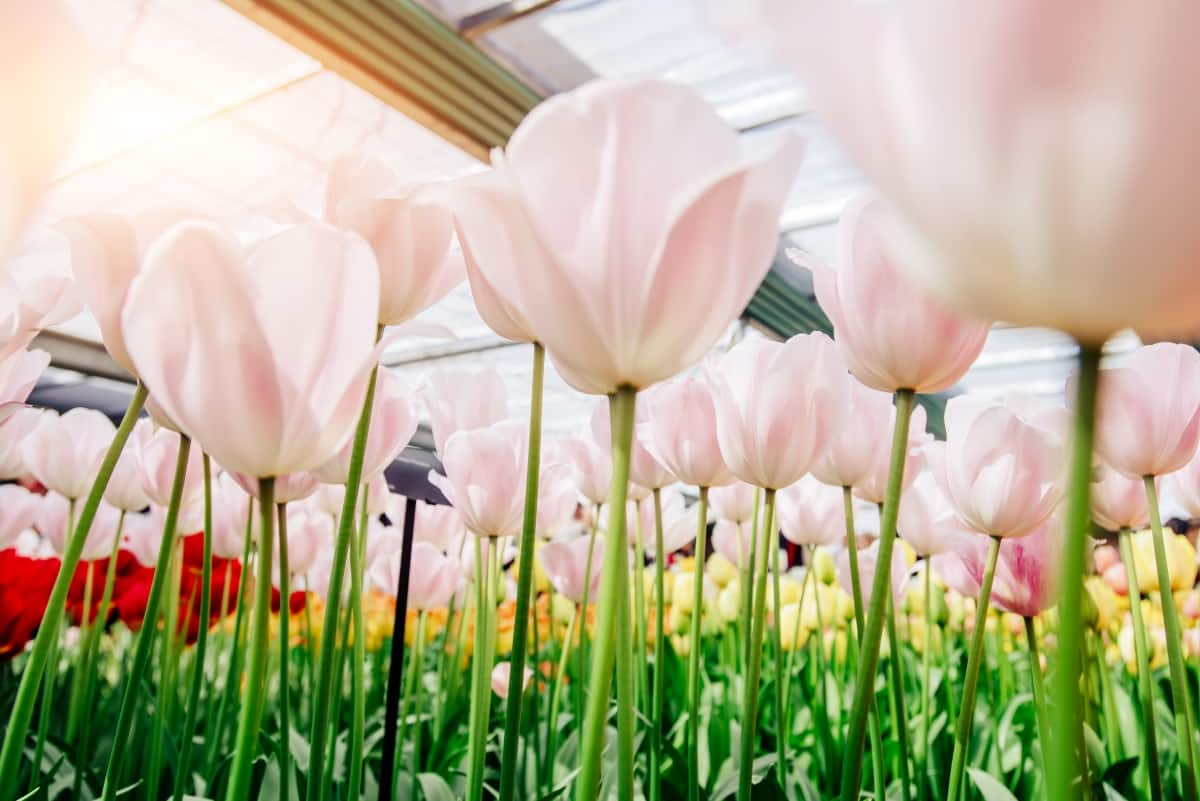
Organic Solutions for Soil-Borne Diseases in Tulips
Soil-borne diseases, such as Fusarium or Verticillium wilt, can affect the health and growth of tulips. To address these diseases organically, it’s important to practice crop rotation and avoid planting tulips or related plants in the same location for multiple years. Using disease-resistant varieties and ensuring proper soil drainage can also help prevent soil-borne diseases. Additionally, applying organic soil amendments such as compost or beneficial fungi can improve soil health and suppress disease development.
Mitigating Wind Damage to Tulips with Natural Supports
Tulips, especially taller varieties, can be susceptible to wind damage. Physical support, such as stakes or cages, can help mitigate wind damage naturally. Planting tulips in sheltered locations or creating windbreaks with fencing or shrubs can also help protect the plants from strong winds. Proper spacing and avoiding overcrowding can also reduce the risk of wind damage.
Natural Strategies for Overcoming Poor Tulip Germination
Poor germination can be a frustrating issue when growing tulips. To overcome this problem naturally, it’s important to ensure that the bulbs are of good quality and not damaged or diseased. Pre-chilling the bulbs in the refrigerator for a few weeks before planting can also help stimulate germination. Additionally, providing optimal growing conditions such as well-drained soil, adequate sunlight, and proper watering can promote successful germination.
In case you missed it: How to Control Aphids on Roses: Home Remedies, Naturally, Organic and Chemical Management

Natural solutions are 100% effective for leaf and bulb-related issues in tulips. Optimize sunlight and water sparingly, and ensure proper drainage. Combat pests with neem oil and maintain soil health. These holistic remedies guarantee thriving tulips in your garden.
- Types of Pesticides Used in Agriculture: A Beginner’s Guide
- Economical Aquaculture: A Guide to Low-Budget Fish Farming
- 15 Common Planting Errors That Can Doom Your Fruit Trees
- How to Make Houseplants Bushy: Effective Tips and Ideas
- Innovative Strategies for Boosting Coconut Pollination and Yield
- Pollination Strategies for Maximum Pumpkin Yield
- The Complete Guide to Chicken Fattening: Strategies for Maximum Growth
- Natural Solutions for Tulip Problems: 100% Effective Remedies for Leaf and Bulb-Related Issues
- Revolutionizing Citrus Preservation: Towards a Healthier, Greener Future
- Natural Solutions for Peony Leaf and Flower Problems: 100% Effective Remedies
- Maximizing Profits with Avocado Contract Farming in India: A Comprehensive Guide
- Natural Solutions for Hydrangea Problems: 100% Effective Remedies for Leaf and Flowers
- The Ultimate Guide to Choosing the Perfect Foliage Friend: Bringing Life Indoors
- From Sunlight to Sustainability: 15 Ways to Use Solar Technology in Agriculture
- The Ultimate Guide to Dong Tao Chicken: Exploring from History to Raising
- The Eco-Friendly Makeover: How to Convert Your Unused Swimming Pool into a Fish Pond
- Mastering the Art of Delaware Chicken Farming: Essentials for Healthy Backyard Flocks
- 20 Best Homemade Fertilizers for Money Plant: DIY Recipes and Application Methods
- How to Craft a Comprehensive Free-Range Chicken Farming Business Plan
- Brighten Your Flock: Raising Easter Egger Chickens for Beauty and Bounty
- How to Optimize Your Poultry Egg Farm Business Plan with These Strategies
- Subsidy for Spirulina Cultivation: How Indian Government Schemes Encouraging Spirulina Farmers
- Ultimate Guide to Raising Dominique Chickens: Breeding, Feeding, Egg-Production, and Care
- Mastering the Art of Raising Jersey Giant Chickens: Care, Feeding, and More
- Ultimate Guide to Raising Legbar Chickens: Breeding, Farming Practices, Diet, Egg-Production
- How to Raise Welsummer Chickens: A Comprehensive Guide for Beginners
- How to Protect Indoor Plants in Winter: A Comprehensive Guide
- Ultimate Guide to Grow Bag Gardening: Tips, Tricks, and Planting Ideas for Urban Gardeners
- Guide to Lotus Cultivation: How to Propagate, Plant, Grow, Care, Cost, and Profit
- Agriculture Drone Subsidy Scheme: Government Kisan Subsidy, License, and How to Apply Online
- Ultimate Guide to Raising Araucana Chickens: Breed Profile, Farming Economics, Diet, and Care
- Bringing Hydroponics to Classroom: Importance, Benefits of Learning for School Students
- Ultimate Guide to Raising Polish Chickens: Breed Profile, Farming Economics, Diet, and Care
- Ultimate Guide to Raising Australorp Chickens: Profile, Farming Economics, Egg Production, Diet, and Care
- Silkie Chicken Farming: Raising Practices, Varieties, Egg Production, Diet, and Care
- Sussex Chicken Farming: Raising Practices, Varieties, Egg Production, Diet and Care